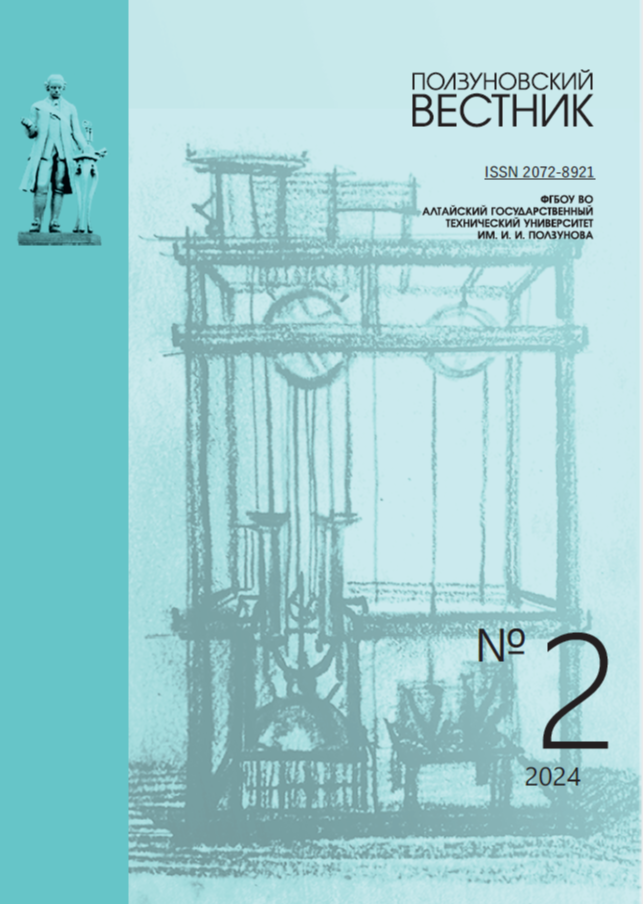PRESCRIPTION AND TECHNOLOGICAL SOLUTIONS DURING PRODUCTIONGLUTEN-FREE BAKERY PRODUCTS
RMDAHC
DOI:
https://doi.org/10.25712/ASTU.2072-8921.2024.02.018Abstract
The range of gluten-free products is quite extensive and includes a variety of flour confectionery (cookies, muffins, waffles), culinary dishes, as well as bakery products. The raw materials for gluten-free bakery products lack a basic component (gluten proteins) and, as a result, the consumer properties of such products do not always satisfy customers. In addition, such products have a reduced nutritional value and a relatively high cost. The work studied the structure-modeling capabilities of melange and psyllium in the production of breadsticks from rice flour. Melange was added in an amount from 5% to 25% by weight of flour, while a decrease in density and an increase in stickiness of the dough were noted with an increase in dosage of more than 15%. The quality indicators of breadsticks have been studied. The taste and smell did not change, the best fragility occurred in sticks with 15% melange. The moisture content of the products and the mass fraction of fat naturally increased with increasing dosage of melange, the acidity and mass fraction of sugar varied within the measurement error. Thus, the recommended dosage of melange in the recipe of breadsticks is up to 15% by weight of flour.
The moisture-retaining and gel-forming properties of psyllium, which contains dietary fiber, allow it to be used as an analogue of gluten. Psyllium was added to the dough in an amount of up to 5% (with an interval of 1%) instead of rice flour in the form of a hydrocolloid. The psyllium content in the dough of 3% led to the production of an elastic-elastic dough that is easily molded. Products made from such dough turned out to be fragile, easily broken, with a loosened structure. The organoleptic and physico-chemical parameters of the breadsticks were not inferior to the control sample
References
Кирюхина А.Н. Современное состояние и преспективы развития производства хлеба и хлебобулочных изделий в России / А.Н.Кирюхина, Р.З. Григорьева, А.Ю. Кожевникова // Техника и технология пищевых производств. 2019.Т.49, №2. С.330–337.DOI: http://doi.org/10.21603/2074-9474-2019-2-330-337.
SilvaH.A., PaivaE.G., Lisboa H.M.&Duarte E. [etal.]. Roleofchitosanandtransglutamineaseontheela-boration ofglutenfree bread // J. Food Sci Technol. 2020. V. 57. № 5. P. 1877–1886. doi: 10.1007/s13197-019-04223-5.
Allen B. & Orfila C. The Availability and Nutritional Adequacy of Gluten-Free Bread and Pasta // Nutrients. 2018. V. 10. № 10. P. 1370. doi: 10.3390/nu10101370.
El Khoury D., Balfour-Ducharme S.& Joye I.J. A. Review on the Gluten-Free Diet: Technological and Nutritional Challenges // Nutrients. 2018. V. 10. № 10. P. 1410. Doi: 10.3390/nu10101410.
БавыкинаИ.А.Эффективностьпродуктов из амаранта вбезглютеновом питании детей с непереносимостью глютена / И.А. Бавыкина, А.А. Звягин, Л.А. Мирошниченко[идр.] // Вопросы питания. 2017. Т. 86. № 2. С. 91–99.
Жаркова И.М. Оптимизация безглютеновой диеты новымипродуктами / И.М. Жаркова, А.А. Звягин, Л.А. Мирошниченко [и др.] // Вопросы детской диетологии. 2017. № 6. С. 59–65. DOI:10.20953/1727-5784-2017-6-59-65.
Урубков С.А., Хованская С.С., Смир-нов С.О. Содержание селена в безглютеновой пищевой продукции // Вопросы питания. 2021. Т. 90. № 1 (533). С. 102–107. DOI: https://doi.org/10.33029/0042-8833-2021-90-1-102-107.
Beltrão Martins R., Gouvinhas I., Nunes M.C., Alcides Peres J. [et al.]. Acorn Flour as a Source of Bioactive Compounds in Gluten-Free Bread // Mole-cules. 2020. V. 25. № 16. P. 3568. doi: 10.3390/molecules25163568.
Biesiekierski J.R. What is gluten? // J. Gastroenterol Hepatol. 2017. V. 32. № 1. P. 78–81. doi: 10.1111/jgh.13703.
Skendi A., Papageorgiou M. & Varzakas T. High Protein Substitutes for Gluten in Gluten-Free Bread // Foods. 2021.V. 10. № 9. P. 1997. doi: 10.3390/foods10091997.
Попов В.Г. Зависимость кислотности безглютенового хлеба от вводимых добавок / В.Г. Попов, Н.Г. Хайруллина, Х.Н.Садыкова // Вестник Воронежского государственного университета инженерных технологий. 2022. №3. С.96‒106.DOI: https://doi.org/10.20914/2310-1202-2022-3-96-106.
Журавлева, Е.О. Безглютеновый хлеб с мукой из семян расторопши / О.О. Пасько, Л.А. Козубаева // Ползуновский вестник.2017. № 2. С. 45–48.
Zaytseva L.V., Yudina T.A., Ruban N.V.& Bessonov V.V. Modern approaches to the development of gluten-free bakery formulations // Voprosy pitanija. 2020.V.89. №1. P.77–85. DOI:10.24411/0042-8833-2020-10009.
Ren Y., Linter B.R., Linforth R.& Foster T.J. A comprehensive investigation of gluten free bread dough rheology, proving and baking performance and bread qualities by response surface design and principal component analysis // Food &function.2020. V. 11. № 6. P.5333–5345.doi: 10.1039/d0fo00115e.
Барсукова Н.В. Пищевая инженерия: технологии безглютеновых мучных изделий / Н.В. Барсукова, Д.А. Решетников, В.Н. Красильни-ков // Процессы и аппараты пищевых производств. 2011. №1. С.51–60.
Ширитова Л.Ж., Жилова Р.М. Влияние меланжа на качество бисквитного теста // Известия Кабардино-Балкарского государственного аграрно-го университета им. В.М. Кокова. 2023. 1(39). С. 165–171. doi: 10.55196/2411-3492-2023-1-39-165-171.
Плотникова Е.Ю. Роль пищевых волокон в коррекции пищеварения и запоров различной этиологии / Е.Ю. Плотникова, Т.Ю. Грачева, М.Н. Синькова, Л.К. Исаков // Журнал Медицинский совет. 2019. №14. С.99–106. doi: 10.21518/2079-701X-2019-14-99-106.
Меркулова Е.Г. Изучение возможности применения псиллиума в технологии безглютено-вых изделий/ Е.Г. Меркулова, О.Л. Ладнова, Е.В. Извекова, А.В. Кузина // Вестник ОрелГИЭТ. 2021. №2(56). С.154–158.DOI: http://dx.doi.org/10.36683/2076-5347-2021-2-56-154-158.
Куц А.А. Возможность использования псиллиума и семян льна в качестве структурооб-разователей мякиша в аглютеновых хлебобулоч-ных изделиях / А.А. Куц, Н.В. Широкова // Моло-дежьинаука:шагк успеху: сборник научных статей 6-й Всероссийской научной конференции перспективных разработок молодых ученых. Курск: Изд-воЮго-Западный государственный университет, 2022. №3. С.110–113.
Смольянова А.П. Псиллиума при произ-водстве различных пищевых продуктов / А.П. Смольянова, М.О Волошина, А.Н. Кудря, М.О. Деева // Журнал Заметки ученого. 2021. № 6 1. С.241–244
Downloads
Published
How to Cite
Issue
Section
License
Copyright (c) 2024 Svetlana S. Kuzmina, Lyudmila A. Kozubaeva

This work is licensed under a Creative Commons Attribution 4.0 International License.















 .
. This work is licensed under a
This work is licensed under a 
